Notes For All Chapters Science Class 6
Our body is capable of performing a wide variety of simple and complex functions. It is able to do so because of the internal structure that facilitates its movement.
Human Body And Its Movements
The human skeleton is the internal framework which is responsible for giving support, shape and protection to our bodies. It contains 206 bones, each playing a distinct yet important task. The skeleton can be classified into two parts called as the axial and the appendicular. The axial skeleton comprises of the central part of the skull, spine, and ribs and the appendicular skeleton consists of the arms and legs.
Terms –
Limbs: The arms or legs of an animal.
Bones: These are the hard white structures below our skin that protect our internal organs. Bones are incapable of bending.
Joints: These are defined as the points at which two bones are fitted together. These are the points at which we can rotate and bend our bodies.
Figure 1: Body Movements
Types of Joints and their Location in Human Body
1. A Pivot joint is a joint that rotates.. Examples of pivot joints in the body in the neck that allows the head to rotate and the ones between the radius and ulna that allow forearm rotation.
2. When bones can move along one axis, it indicates the presence of Hinge joint. e.g. Elbows and Knees.
3. In the Ball and Socket joint, a partial spherical structure is present inside a socket allowing movement in all directions. e.g. hips and arms
4. As the name suggests Fixed joint allows no movement to occur. e.g Skull
Figure 2: Types of Joints
Important Points to remember in a Human Skeleton:
1. Bones provide support, protection, movement and perform several other functions.
2. The bones in the skull (Cranium, Mandible, Maxilla) give protection to the brain.
3. The long bones such as humerus, radius, ulna, tibia, fibula support the weight of body
4. The carpals are located in wrist and tarsals are located in ankles. They are examples of short bones.
5. The bones protecting the spine are called as the vertebral column. Cervical area (top 7 vertebrae), Thoracic (next 12), Lumbar (bottom 5 vertebrae), Sacrum (5 fused or stuck together bones) and Coccyx (the tiny bit at the bottom of the spine).
6. The sternum and rib cage constitute the chest bones.
Figure 3: Human Skeleton
Some More Points to Remember
Gait of Animals
1. Earthworm:
Does not have bones
Earthworm body is made up of rings
A slimy substances secreted by its body aids movement (NSO)
Figure 5: A SnailFigure 5: A Snail
2. Snail:
(a) It has a slimy body, which does not have bones.
(b) The shell of the snail does not help in movement. It has to be carried along.
(c) The foot of the snail is a thick structure and is made up of strong muscles.
(d) A muscular organ called ‘Foot’ helps in locomotion.
Figure 5: A Snail
| Cockroach |
|
| Fish |
|
| Birds |
|
| Snakes |
|
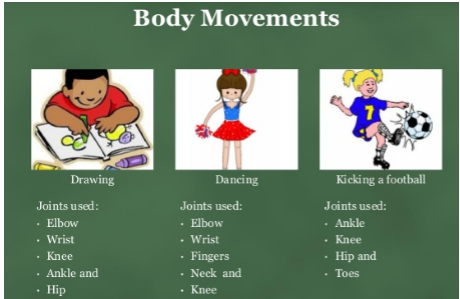
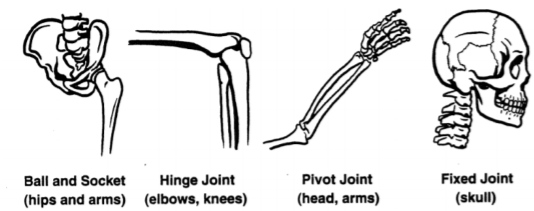
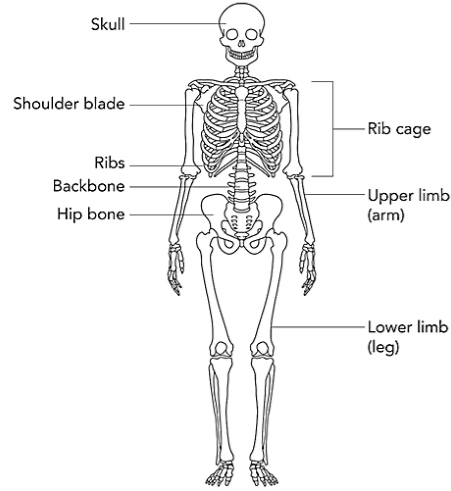

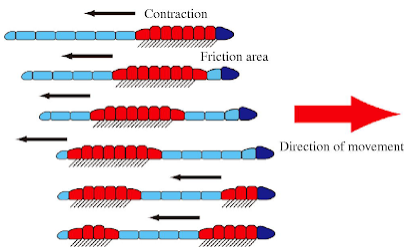
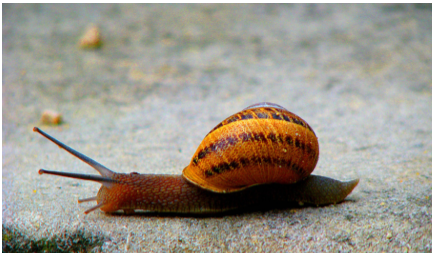

I LIKE IT
What good
These notes are helpful to me.
Even i have been subscribe evidhyarthi channel. Teachers are very helpful to me and my favourite teacher is Science Teacher